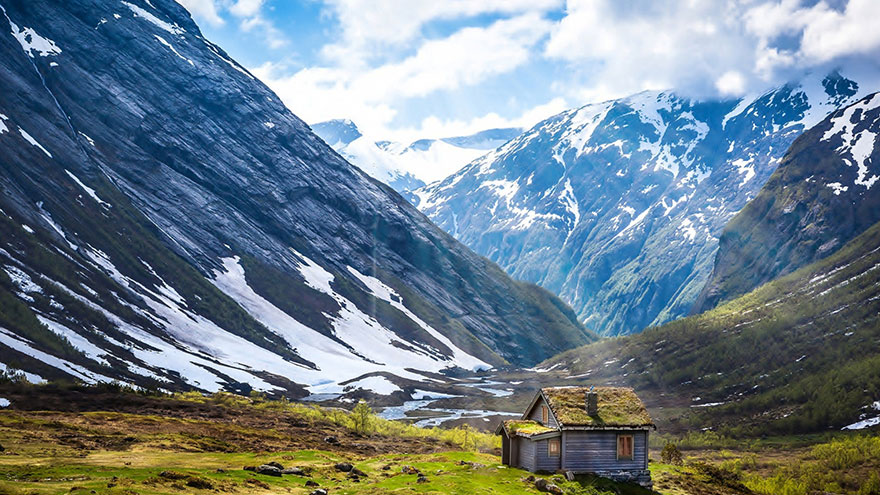Physical Characteristics of Mountainous Regions
Mountainous regions are a distinct part of Earth’s topography. They generally have peaks that rise above 1,000 feet in elevation and are the source of up to 80 percent of the world’s freshwater. Although rather inhospitable because of cold temperatures and a sparse oxygen supply, mountainous regions are home to approximately one in 10 people around the globe.

Rocks
Mountainous regions are characterized by rocky surfaces. The three main rock types are igneous, sedimentary and metamorphic. Igneous rocks, also known as volcano rocks, form when magma cools and solidifies.
Sedimentary rocks are created when small broken-off pieces of other rocks become cemented together by mineral, chemical or electrical processes. Metamorphic rocks are sedimentary and igneous rocks that transform into denser rocks due to the intense pressure and heat found deep within Earth’s crust.
Mountain Formations
Not all mountain ranges are shaped the same way. Plate tectonic processes determine the formation and appearance of mountain ranges — plates can crunch into each other, slide away from each other or grind past one another.
The following mountain formation types are created as a result of these tectonic processes: dome mountains, fold mountains, fault-block mountains, volcanic mountains and plateau mountains.
Elevation
High elevations are a characteristic that all mountainous regions share. Temperatures tend to decrease as elevation increases in Earth’s troposphere (the lowest layer of Earth’s atmosphere). Therefore, precipitation primarily falls in these areas as snow.
The highest mountain range on Earth is the Himalayan Range, which serves as home to Mount Everest, the world’s highest peak at 29,029 feet.
Range Size
Mountainous regions can extend enormous distances. The Andes Mountains in South America, stretching 4,500 miles, are the planet’s longest mountain chain.
Because of the enormous length of these mountains, the climate is vastly different in the north than in the south. In the northern region of the Andes, the climate is hot due to its proximity to the equator. In the southern region, temperatures are much colder due to influence from the Antarctic.
Lakes, Rivers and Glaciers
Lakes, rivers and glaciers are physical characteristics found in all mountain ranges around the world. In fact, mountainous regions are home to up to 80 percent of the world’s freshwater supply.
However, about 70 percent, or 24 million km^3 of water, is in the form of ice and permanent snow cover. Lakes and rivers hold leftover runoff precipitation, a valuable resource to societies around the world.

